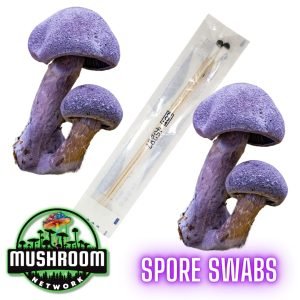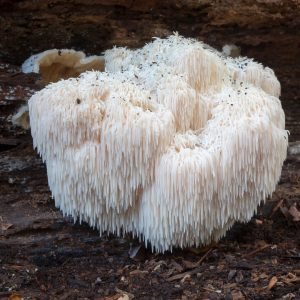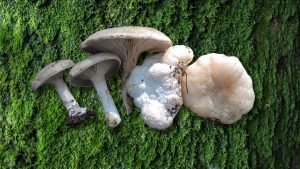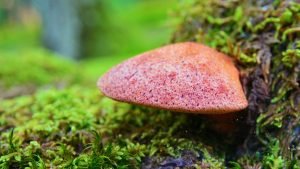Dear Mycelium enthusiasts, scholars, and the fungi-curious alike, buckle up as we embark on a journey into the world of the Lion’s Mane (Hericium Erinaceus)—a mushroom not just of culinary delight but a beacon of medicinal marvel. Let’s dive into the depths of what makes this fungi a must-know in the mycological realm, presenting a treasure trove of knowledge!
SCIENTIFIC NAME:
(Hericium Erinaceus)
COMMON NAME(S):
Lion’s Mane Mushroom | Hedgehog Mushroom | Bearded Tooth Mushroom | Satyr’s Beard Mushroom | Pom Pom Mushroom | Bearded Tooth Fungus | Monkey Head Mushroom
I-NAME:
LION
Founding Mycologist/Discovered By:
While the ancient origins remain shrouded in the mists of time, traditional Chinese medicine has recognized its benefits for centuries. Modern mycologists continue to unveil its secrets, enriching our database with every discovery.
If you have additional information, please help us enrich our database!

RECOMMENDED TEMPERATURES
Colonizing Temps:21-24°C (70-75°F) | Fruiting Temps:15-21°C (60-70°F) |
SPORE COLOR:
WHITE
Hericium Erinaceus, or Lion’s Mane, emerges as a culinary gem and a medicinal powerhouse. Its cascading, icicle-like spines offer not just a visual spectacle but a brain health boon, earning its nickname “The Smart Mushroom“.
Step right up to the Mushroom Carnival! 🍄🎪 New here? Don’t wander in the wild yonder picking ‘shrooms willy-nilly! Educate yourself and avoid the ‘oops, I ate it’ face. 🤯 Log In or Become a Myco-Patron (it’s as free as a spore in the wind!). Join us to unravel the myco-magic! 🧙
DESCRIPTION:
The Lion’s Mane Mushroom, Hericium Erinaceus, is an extraordinary specimen with a unique appearance that captivates the observer. It is characterized by its cascading, tooth-like spines, which resemble a waterfall of soft, white tendrils flowing elegantly from a single, robust base. This distinctive morphology not only makes it a visual spectacle in the realms of mycology but also a sought-after species among mushroom enthusiasts. Unlike the common cap-and-stem structure of many fungi, the Lion’s Mane’s spines are its most striking feature, serving both aesthetic and functional purposes by increasing the surface area for spore dispersion.
INTENDED USES:




HABITAT AND DISTRIBUTION:
The Lion’s Mane Mushroom exhibits a strong preference for hardwood forests, often found gracing the sides of fallen logs and living trees. Its ability to thrive in such specific environments contributes to its rarity and allure. While its presence spans across North America, Europe, and parts of Asia, the conditions for its emergence are so particular that encountering it in the wild is considered a special occurrence. The mushroom’s natural habitat underscores its ecological importance, thriving in and contributing to the rich biodiversity of forest ecosystems.
ECOLOGICAL ROLE:
As a decomposer, the Lion’s Mane plays a crucial role in the ecosystem, breaking down dead wood and returning vital nutrients to the soil. This process not only aids in the decomposition cycle but also supports the health and sustainability of forest environments. The Lion’s Mane’s ecological activities underscore its significance beyond its medicinal and culinary applications, highlighting its contribution to maintaining the balance within its native habitats.
GROWTH AND CULTIVATION:
Cultivating Lion’s Mane Mushroom is both a science and an art, requiring a deep understanding of its natural growth conditions and an ability to replicate these in a controlled environment. The mushroom thrives on hardwood substrates, and successful cultivation necessitates a humid, stable environment to simulate its native woodland habitats. Patience is essential, as the cultivation process is meticulous and time-consuming. However, the rewards are plentiful, offering cultivators not only a beautiful fungal specimen but also a bounty of potential health benefits.
HISTORICAL & CULTURAL INFO:
Hericium Erinaceus holds a place of honor in traditional Chinese medicine, where it has been used for centuries to support overall health and well-being. Its recent recognition in the Western world has spurred scientific interest, with research exploring its potential in supporting neurogenesis and offering cognitive benefits. This blending of ancient wisdom and modern science enriches our understanding of the mushroom’s value across cultures and eras.
GENETIC LINEAGE/HISTORY:
The genetic secrets of the Lion’s Mane Mushroom are a subject of ongoing scientific exploration. Each study peels back another layer of its complex genetic lineage, offering insights into its unique characteristics and potential benefits. This ongoing research is crucial for unlocking the full spectrum of the mushroom’s capabilities and understanding its place within the fungal kingdom.
CHEMICAL COMPOSITION:
Lion’s Mane is renowned for its rich composition of bioactive compounds, including beta-glucans, hericenones, and erinacines. These compounds are the foundation of the mushroom’s medicinal properties, contributing to its neuroprotective and cognitive-enhancing effects. The intricate chemical makeup of Lion’s Mane positions it as a powerhouse of potential health benefits, further solidifying its reputation in the medicinal mushroom community.
FUNCTIONAL (WELLNESS) PROPERTIES (if applicable):
The Lion’s Mane Mushroom is celebrated for its neuroprotective properties, with research highlighting its capacity to enhance cognitive function and offer potential in combating neurodegenerative diseases. Its unique chemical composition supports nerve growth and brain health, making it a subject of interest for both traditional and modern medicinal practices.
CULINARY USES:
Beyond its medicinal value, Lion’s Mane is esteemed in the culinary world for its meaty texture and subtle flavor, which make it a versatile ingredient in a variety of dishes. From enriching soups and stews to enhancing sautés and vegetarian dishes, Lion’s Mane adds both nutritional and gourmet value to the kitchen.
CAUTIONS & WARNINGS:
While Lion’s Mane is generally considered safe for consumption, individuals should consult with a healthcare provider before incorporating it into their medicinal regimen, especially those who are pregnant, nursing, or on medication. Awareness and caution are advised to ensure its benefits are enjoyed without adverse effects.

FINAL CONSIDERATIONS:
As we draw our exploration of Hericium Erinaceus to a close, let this serve as an invitation to delve into the marketplace and discover the myriad ways this remarkable mushroom can enrich your life. Whether through its health benefits or culinary applications, Lion’s Mane stands out as a testament to the incredible diversity and potential of the fungal kingdom. In the world of fungi, Lion’s Mane indeed holds a place of reverence, offering a blend of beauty, health, and culinary delight that is unparalleled.
Don’t forget to check out the 🍄 Mushroom Network’s Marketplace to see what’s available. But hurry, our shelves are constantly evolving, and you wouldn’t want to miss out on this wonderful mushroom. Join our growing network of Patrons, Genetics, and Mycologist Vendors only on the 🍄 Mushroom Network!
Caught in the middle of the Mushroom Metropolis! 🍄🎶 If you’re just tuning in, you’re one step away from becoming a spore savant! Don’t just stand there like a stump – Log In or Become a Myco-Patron (FREE, like a mushroom in the wild!). Unlock the enchanted encyclopedia of fungi. 📚✨
-
 Rated 5.00 out of 5 based on 1 customer rating$14.99 – $59.99On Sale! Select options This product has multiple variants. The options may be chosen on the product page
Rated 5.00 out of 5 based on 1 customer rating$14.99 – $59.99On Sale! Select options This product has multiple variants. The options may be chosen on the product page
FAQs:
The effects of Lion’s Mane on cognitive function can vary by individual. Some may notice improvements within a few weeks, while for others, it might take longer. Consistent consumption as part of a healthy lifestyle is recommended for best results.
Yes, Lion’s Mane can be cultivated at home with the proper equipment and conditions. Home cultivation kits are available and provide a simplified method for growing your own Lion’s Mane mushrooms.
While Lion’s Mane is generally safe, interactions with other supplements or medications can occur. It’s important to consult with a healthcare provider before combining it with other treatments.
For the most part, yes, it’s a fantastic addition to vegetarian and vegan diets.
Lion’s mane mushrooms are legal to buy and use in the United States, as well as other regions. However, they are considered a protected species in some countries and U.S. states, which means foraging for them could be illegal due to their rarity. This legal status emphasizes the importance of respecting conservation efforts and regulations surrounding the harvesting of wild mushrooms.
Related Articles:
The Mindful Mycophile: Harmonizing Mushrooms and Mindfulness
About This Article: Dive headfirst into the whimsical world of ‘The Mindful Mycophile,’ where mushrooms...
Read More...Lion’s Mane: The Brain-Boosting Mushroom
Delve into the fascinating realm of Lion’s Mane, a unique mushroom that is gaining popularity...
Read More...Cooking with Lion’s Mane: Gourmet Recipes for the Home Chef
The allure of culinary explorations lies in the fusion of flavors, textures, and aromas. Lion’s...
Read More...Neurogenesis and Neurotropic Factors in Lion’s Mane Mushrooms
Delving into the intriguing world of mycology reveals yet another gem – the Lion’s Mane...
Read More...Other Mushroom Species To Research:
Lion’s Mane (Hericium Erinaceus)
Dear Mycelium enthusiasts, scholars, and the fungi-curious alike, buckle up as we embark on a...
Read More...Black Reishi (Ganoderma Sinense)
Scientific Name: Ganoderma Sinense COMMON NAME(S): Black Reishi | Black Lingzhi |Black Lucid Ganoderma |...
Read More...Hen of the Woods (Grifola Frondosa)
Scientific Name: Grifola Frondosa COMMON NAME(S): Hen of the Woods | Maitake The Hen of...
Read More...Red Reishi (Ganoderma Lucidum)
Welcome to the illustrious world of fungi, where each mushroom carries its own unique story...
Read More...Other Recommended Reads:
Shrimp of the Woods (Entoloma Abortivum)
Welcome, mycophiles and curious minds, to a fascinating exploration of the Entoloma Abortivum – a...
Read More...Chestnut (Pholiota Adiposa)
SCIENTIFIC NAME: (Pholiota Adiposa) COMMON NAME(S): Chestnut Mushroom | Shimeji | Chestnut Bolete | Chestnut...
Read More...Beefsteak Mushroom (Fistulina Hepatica)
Welcome, fungal enthusiasts and curious minds, to an exploration of Fistulina Hepatica, commonly known as...
Read More...Mystical Mycelium: Quantum Physics and the Interconnectedness of Fungi
The interconnectedness of fungi through mycelial networks represents one of nature’s most fascinating and complex...
Read More...Whoa there, Spore Sport! 🍄 Looks like you’re not logged in yet. Don’t you know what you’re missing? MYCO-CREDITS! Imagine all the fungal fun you could have. It’s like finding a Morel in May and not picking it. Tragic, right? Log In or Become a Myco-Patron and start racking up those credits. It’s more rewarding than finding a mushroom in your backyard! 🌟🏡





















